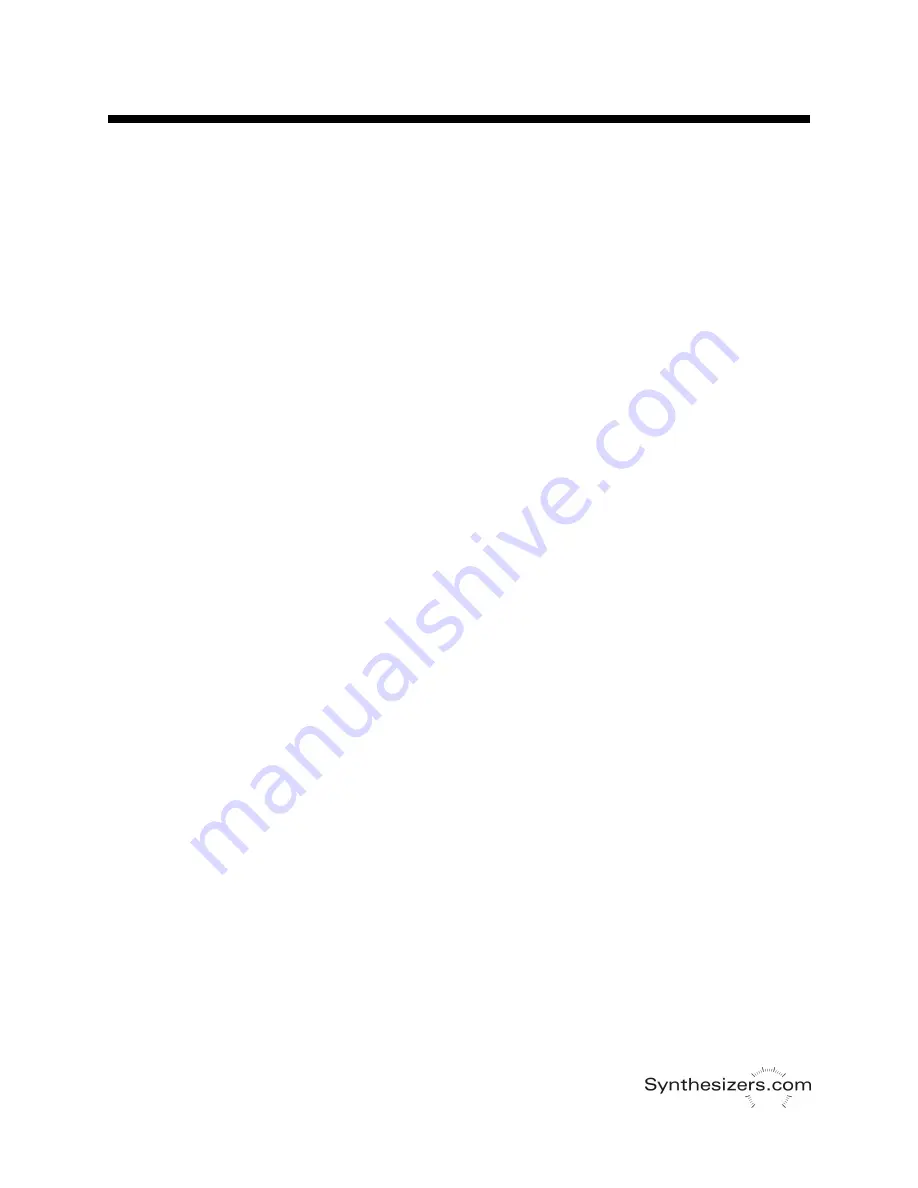
Q170
MIDI Gates
MIDI Message Interpretation
In these examples, a keyboard is assumed to be the source of MIDI messages to the Q170 MIDI Gates
module. The source could be any other controller or a computer (DAW). Every message, without excep-
tion, is sent to the MIDI Thru output. MIDI messages are also sent to the MIDI output but with the pro-
grammed messages filtered out.
Note On/Off Messages
Programming gates to follow MIDI Note messages is the primary function of the Q170. Any note number
can be assigned to any Gate output, and many notes can be assigned to each Gate output.
There are three different modes for responding to Note On/Off messages.
Follow Mode
In Follow mode, programmed Gate outputs simply follow note messages. A Gate output will turn On
when a Note On message is received and turn Off when a Note Off message is received. Activate Follow
mode by simply pressing and releasing a key while the Set button is pressed.
Toggle Mode
In toggle mode, the programmed Gate outputs toggle between On and Off as Note On messages are re-
ceived. The first Note On will turn the Gate output On, then the second will turn it Off. Note Off mes-
sages are ignored. This mode is useful for turning effects or settings On and Off without requiring a key
being pressed. Activate Toggle mode by pressing and releasing the key twice while the Set button is
pressed.
Trigger Mode
In Trigger mode, the programmed Gate outputs turn on for a short duration (5ms) then turn Off. You'll
see the LED flash briefly. Note Off messages are ignored. This mode is useful for triggering sequencers
or AR envelopes. Activate Trigger mode by pressing and releasing the key three times while the Set but-
ton is pressed.
When multiple notes are programmed to a single Gate output, the last message received will override
others that are currently active. One key can toggle a note On and another can turn it Off.
Continuous Controller (CC) Messages
Gates can be programmed to CC messages. These are programmed the same way as Note messages -
press the Set button for the desired Gate output, send the message, then release the Set button.
There are 128 possible CC's. Some are typically assigned to volume, modulation and other common
functions so select thoughtfully. Each CC message contains a value of 0-127.
CC messages from a slider or knob transmit a stream of messages as the controller is moved. CC mes-
sages from a button just send a single message. If the Q170 receives more than one CC message from
a CC number while Set is being pressed, it will be programmed as a knob or slider and the value of the
controller determines the Gate output. Values of 0-63 are Off and 64-127 are On.
If the Q170 receives only one CC message from a CC number while Set is pressed, it will be programmed
as a button and the Gate output will Toggle between On/Off as the button is pressed.
If an output is programmed as a button (toggle on/off behavior) and messages for a knob/slider of the
same CC # are sent, the output will toggle on/off very fast as the knob/slider is moved. This is the correct
behavior and potentially musically useful.
Содержание Q170 MIDI Gates
Страница 10: ......




























